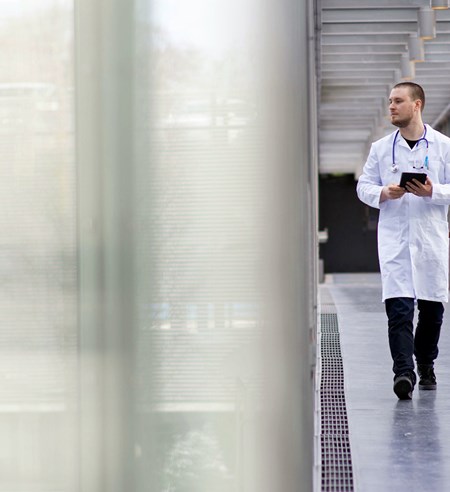Head of Health, Tietoevry Care
The challenge
Incorporating all care chain data into one easy-to-use health information system. Harmonizing system functions with the hospital district’s work processes.
The solution
One inter-organizational Lifecare system that covers the patient’s entire care cycle from appointment booking and receiving care, to medication and invoicing.
About the customer
The Kanta-Häme Hospital District (KHSHP) is responsible for arranging specialized medical care in the Kanta-Häme county area. The 11 member municipalities of Kanta-Häme Hospital District are Hämeenlinna, Riihimäki, Forssa, Janakkala, Hattula, Hausjärvi, Loppi, Tammela, Jokioinen, Ypäjä, and Humppila.
Kanta-Häme Central Hospital in Hämeenlinna and the Riihimäki Hospital treat approximately 65 000 customers annually. The hospital district employs altogether roughly 2000 professionals and serves the 173 000 residents of the area. KHSHP is part of the Tampere University Hospital catchment area.
Instant overview of the customer
The essential information of the patient visit can be seen with a glance and entries made fast. The whole patient management process is handled with a single system.
More time for patient work
The care staff can pay more attention to the patient instead of the information system. Up-to-date information will increase the quality of patient work and enable the best care possible.
Easy to learn and use
The system logic echoes the operating principles of modern web browsers and applications. The workspace can be customized according to the needs of the user.

Harmonizing working methods and the system
Finnish social and health care is under transformation as municipalities and hospital districts converge. To ensure uninterrupted care chains, patient records must be accessible across organizational boundaries.
The aim is to provide the patient record system users with a situational picture of all the relevant data. The users need to know how information moves in the system and how entries are made, in order for the information to be uniform – regardless of who made the entry. Since the entire care chain of the patient will be managed by the same system, it is crucial that the different roles of the users and patient data security are managed diligently.
”We had to re-model our work processes. Before, care work was supported only with forms, whereas now it is supported with the process. We modified both the process and the system, in order to make them work together seamlessly.”
Ari-Pekka Paananen
CIO
All patient data in one place
Storing healthcare service and patient history information of primary and specialized healthcare in a single system enables an uninterrupted care chain for the customer. Up-to-date healthcare records remain accessible for the professionals of the Kanta-Häme Central Hospital and the area’s healthcare units.
The system is easy-to-use and operates like modern web browsers and applications. The user needs very little training to use the system, whereas the renewed work processes will require some learning time. The workspace changes according to the task and role at hand, and the user can modify the opening window to match his or her needs.
”The user processes the referral, reserves the appointment, books the examinations, and the patient receives the care. The cycle will close once the patient has been given prescriptions and information on medication, and once the statistics have been updated and the patient has been invoiced”, Project Manager Marjukka Virtanen describes.
Lifecare is an internal system for the Kanta-Häme Hospital District. Certain, agreed-upon parts of the patient data are transferred to regional digital services and the national Kanta Services.
”The amount of clicks has decreased, referral processing has become faster, and medications used can be seen with a glance. Updating the statistics and making entries necessary for invoicing have also become more efficient.”
Marjukka Virtanen
Project Manager
The system was deployed in the Kanta-Häme Hospital District on March 3, 2019. Co-planning and training were central to the deployment.
Tieto’s system experts onboarded the persons in charge at the Kanta-Häme Hospital District to the possibilities of Lifecare. Main user working groups reflected on how the system features could best support the hospital district’s everyday work, and the system was configured as needed.
”Tieto trained the main users, and all the end users took part in a 3-hour training. The trainings were tailored for different professional groups, such as the care staff, doctors, ward clerks, social workers and psychologists.”, Virtanen says.
The personnel was offered also a digital learning environment.
“Careful preparation and testing beforehand is crucial for deployment. This way possible problems can be found before updates. In trainings, it is especially important to take work processes into account.”
Marjukka Virtanen
Project Manager





